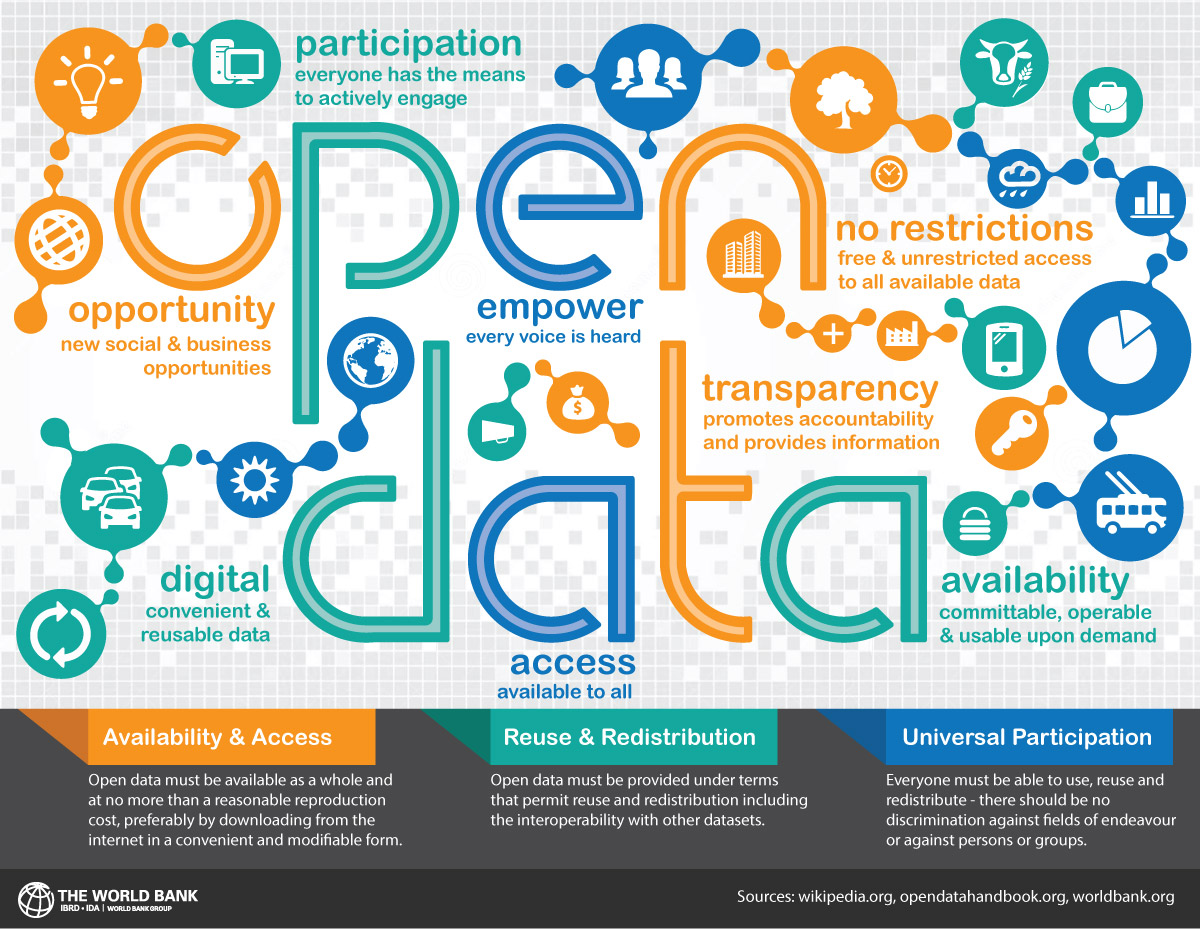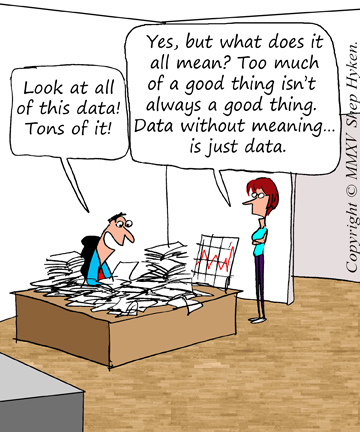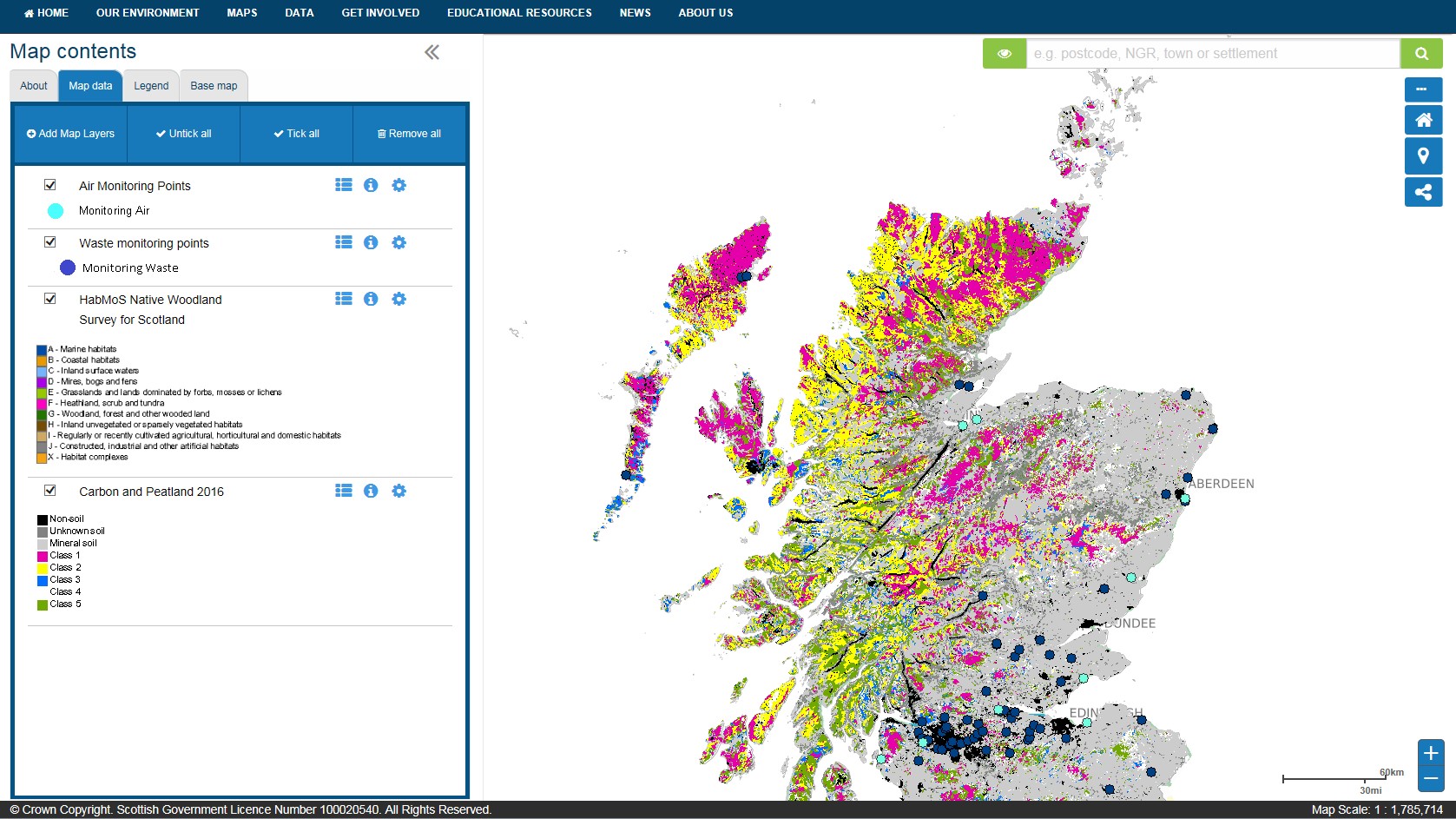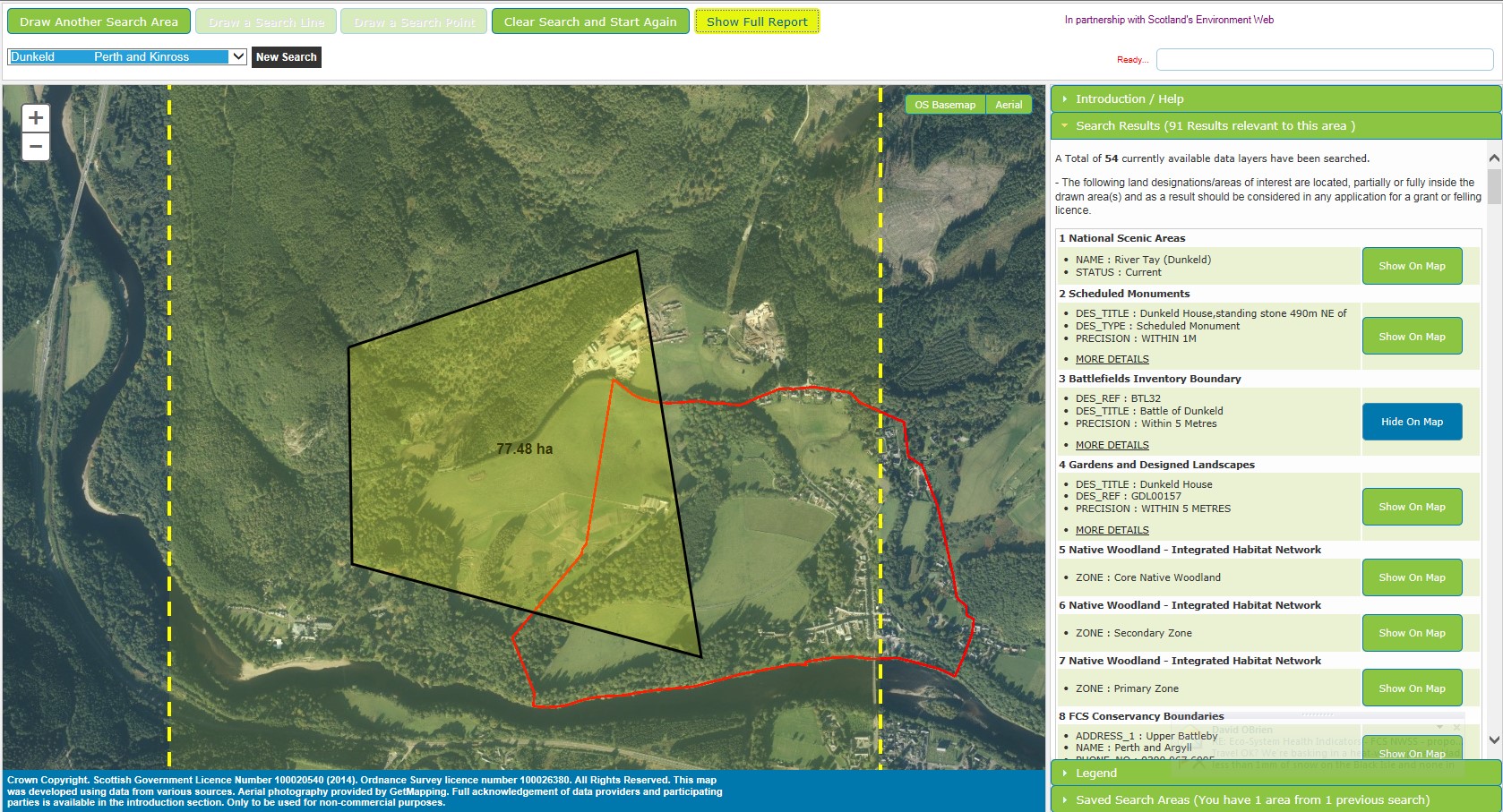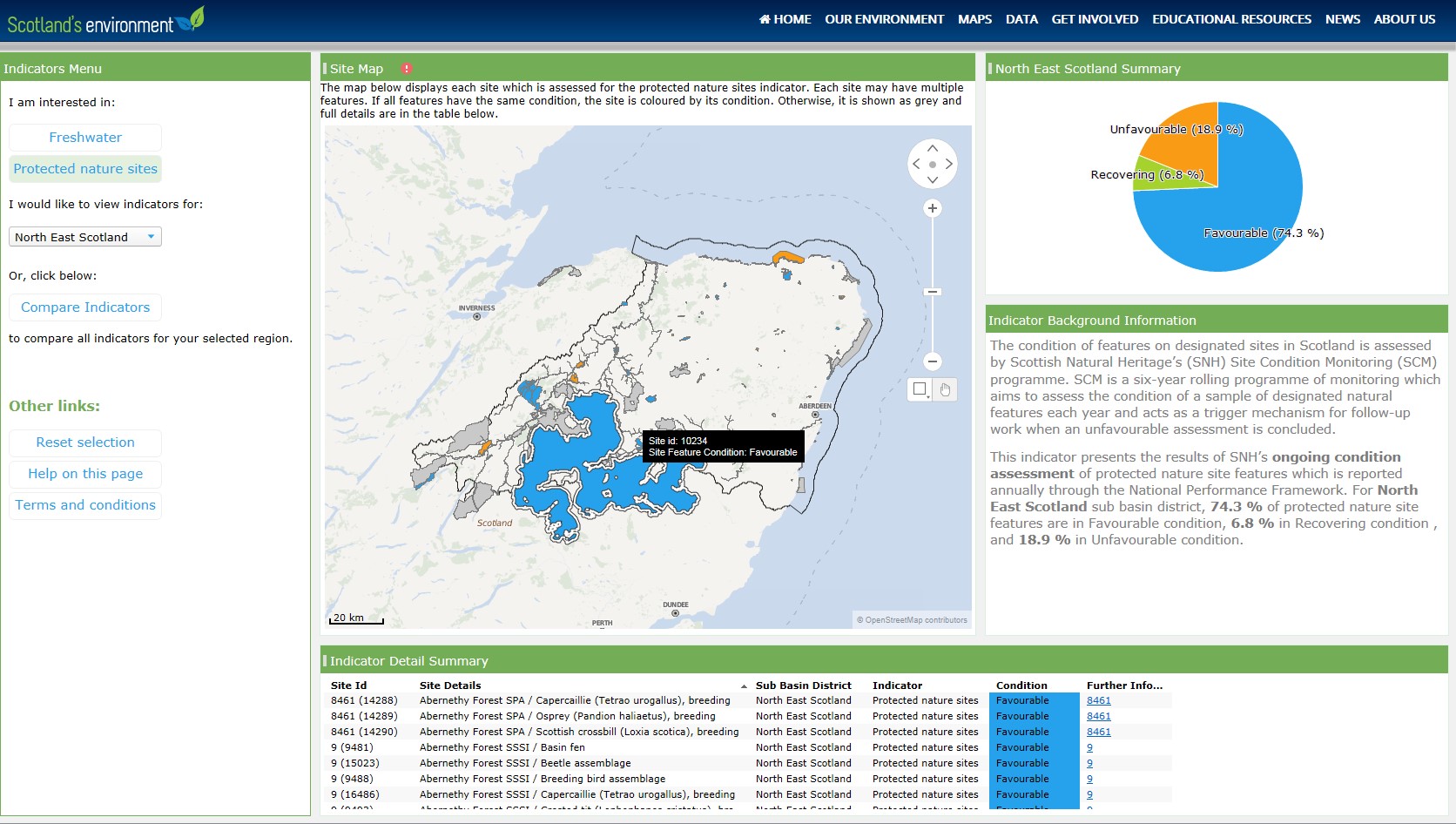Saturday 3 March was international Open Data Day – an annual celebration of open data all over the world, and an opportunity to highlight the benefits of open data to government, business and communities. Here we'll show you how Scotland’s environment web is working with partners to mobilise environmental data and extend its reach and influence by turning it into accessible information and knowledge.
Scotland's environment web
March 06, 2018
Opening up our data
“Our ability to do great things with data will make a real difference in every aspect of our lives.”
Jennifer Pahlka, Founder and Executive Director for Code for America
Many organisations collect and use data to perform their daily tasks. Often that data is used only once, for the specific task it was collected for and then hidden away within the deepest darkest depths of an organisation’s files to never again see the light of day. That data, however, can be extremely useful to other data users, out with the task for which it was originally collected and often, out with the organisation that collected it. These wider users can take this data and use it in innovative ways to gain new insights and trends that can increase our understanding of the environmental challenges that need to be addressed, help to prioritise and inform decisions, and initiate positive action.
Scotland’s public sector have a responsibility to society, the economy and the environment to open up more data – to help target policy and decisions on the most important issues, to be more transparent to the communities they serve, encourage participation, and support innovation within a sustainable economy.
But what is open data? Open data is the release of non-commercially sensitive and non-personal public sector information. It does not contain personal information relating to individuals or information that could be used to identify individuals (Open data strategy, Scottish Government, 2015). Open data is data that anyone can access, use or share. It should be shared in a standardised format so that it is easy to use and understand, and easily tracked back to where it came from. (Open Data Institute).
Since the publication of the Scottish Government open data strategy, more and more data has been openly published across the public sector. With portals such as the Scottish Spatial Data Infrastructure (SSDI) Metadata Portal and data.gov.uk, it is much easier to find and discover open data. But more data doesn’t always mean more information.
Unlocking information from data
Environmental data underpins so many different activities; from carrying out assessments, applying for grants and permits, and making decisions on environmental impacts to carrying out research, learning at school about statistics, science, and geography, and understanding more about the very environment in which we live and work. We all have questions we want to answer, and with the right data accessible in the right format, we can retrieve those key nuggets of information that help us reach the right answers. So it is important to have access to data that is trusted and authoritative, relevant to the big questions, current and up-to-date, and available in a useful format.
“Web users ultimately want to get at data quickly and easily.”
Tim Berners-Lee
Since its inception in 2011, Scotland’s environment website has been developed as a consumer of open data, transforming it into accessible and understandable information. Embracing the concept of a Shared Environment Information System (SEIS), a high proportion of data tools and services on Scotland’s environment website rely on live open data services published by our partners. This makes a wide range of environmental data more accessible to multiple users and uses, and reduces the risk of different versions of data being used. Users can be confident they are viewing the most up-to-date published data, and all stakeholders within a decision-making pipeline can have access to, and view, the same data; there is only one version of the truth.
How does Scotland’s environment website use open data?
Web map services (WMS)
Scotland's environment map draws on over 200 publicly available web map services (WMS) from a range of partners and external sources. WMS utilised by Scotland’s environment website conform to the OpenGIS Web Map Service standard. Metadata (information about the data) is sourced directly from Scotland’s Spatial Data Infrastructure (SSDI) metadata portal. This is the only place you can view any combination of environmental spatial data in a single map tool
ESRI REST and web feature services
REST map services give users a richer level of functionality, providing the same benefits as WMS but offering additional means of interacting with map data layers. Scotland’s environment website takes advantage of these benefits in the two Land Information Search tools - AGRI-Environment and Forestry, and COMAH Environment Risk Assessment. The tools allow users to carry out instant spatial queries on over 40 data sets from different organisations and retrieve extra information to provide improved ways of analysis and exploration of location based data.These applications help users quickly identify environmental features, designations and sensitive areas that fall within or close to a specific area of interest, that need to be taken into consideration when assessing the impact of current or proposed site activities.
Open standard XML feeds
NatureScot publishes data that you can view in the Protected nature sites data analysis tool. The data is published as a live XML (extensible markup language) feed, which is a free open standard format that anyone can consume for their own analysis and visual presentation. It is also used in other similar technologies such as RSS feeds. By utilising this data in visual analytics software: Spotfire, the Data Analysis tool is able to provide an interactive, searchable visual analysis of the condition of Scotland’s most important nature sites.
The advantage of having access to the data in a live open XML feed is that it can also be used in other tools, to not only present the data in different ways, to meet different user and information needs, but also allows it to be easily combined with other datasets.
This is the case with the Ecosystem health indicators tool, which is used to report on progress in delivering the 2020 Challenge for Scotland’s Biodiversity and prioritise action to protect and enhance ecosystem health. The data has been transformed into three summary indicators for Protected Nature Sites of Favourable, Recovery and Unfavourable. Users can view the indicators at either a national Scotland summary or at a more specific catchment area level.
Open Data Collaboration
Realising the full value of open data is a collaborative process with the aim of providing benefits for all. Organisations need to share data and work together to create new uses for it that can help to solve problems in ways that might not have been anticipated. Collaborations between multiple partners, such as the Scotland’s environment web partnership, can help convert open data from insight into action.
Adobe Acrobat Reader is the free, trusted leader for reliably viewing, annotating and signing PDFs.
Download Adobe Acrobat Reader

